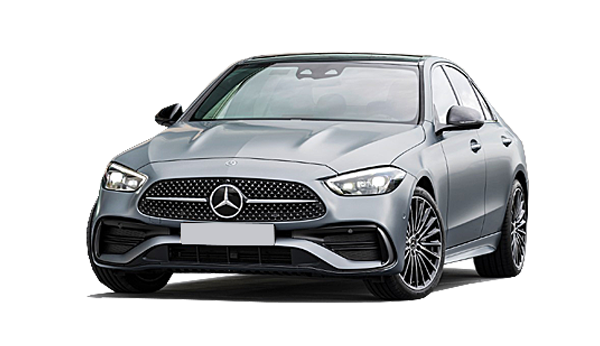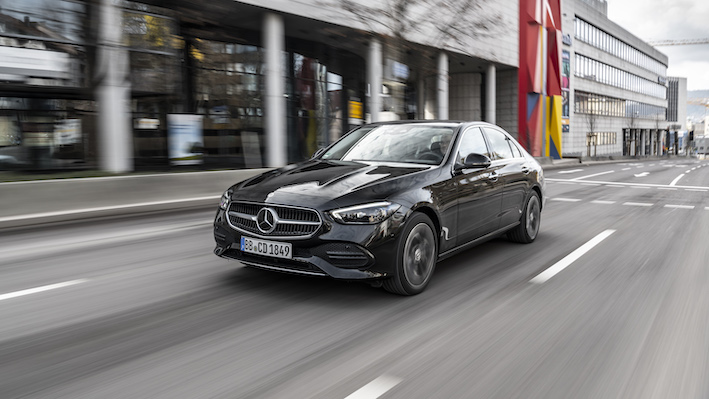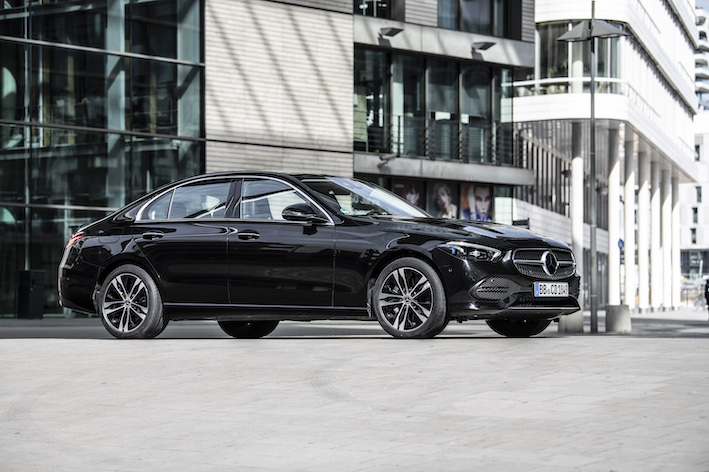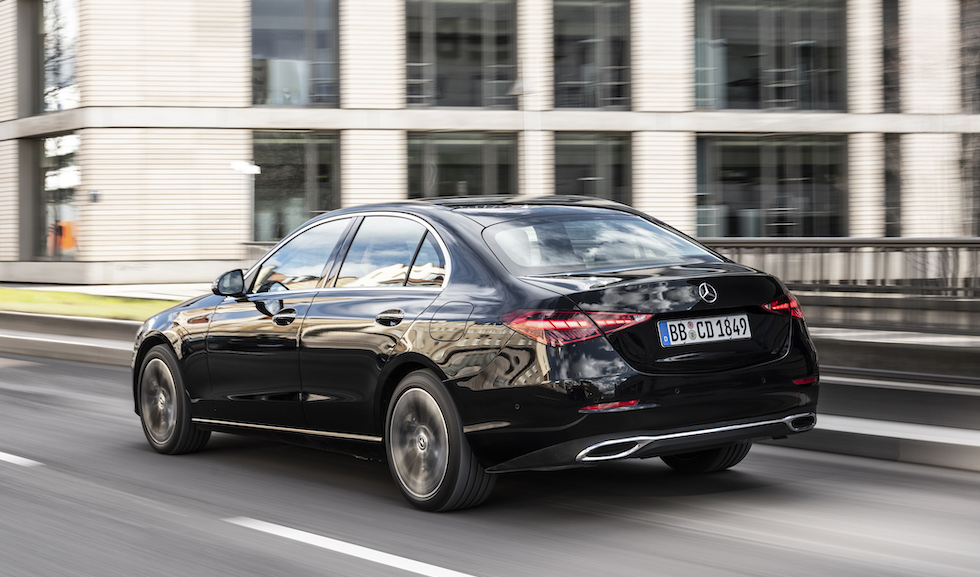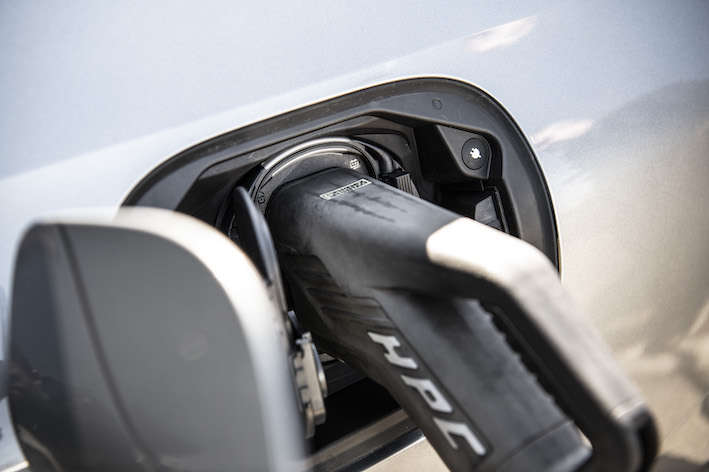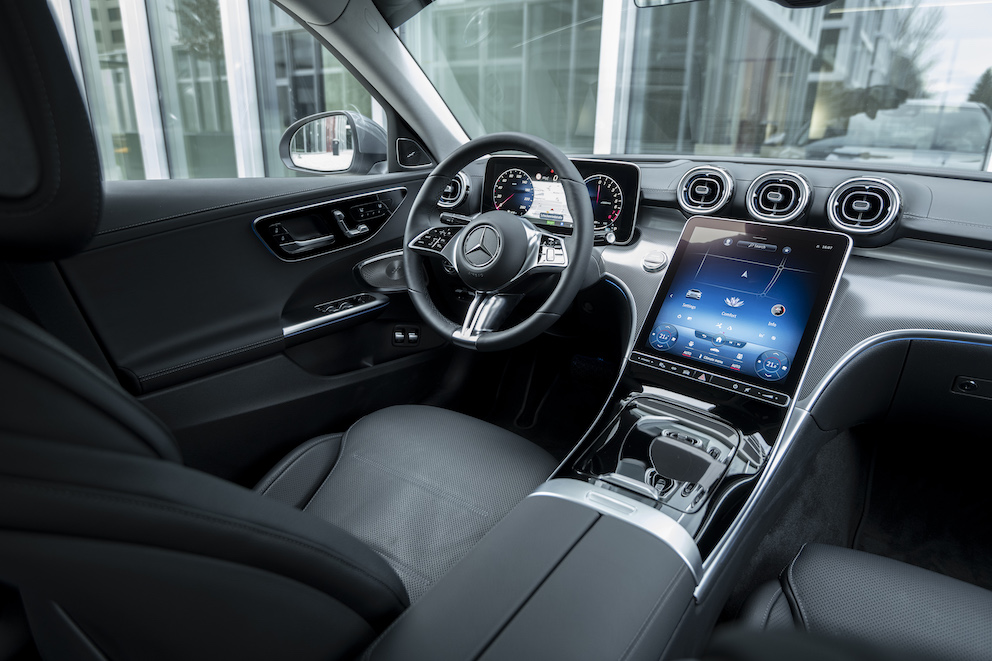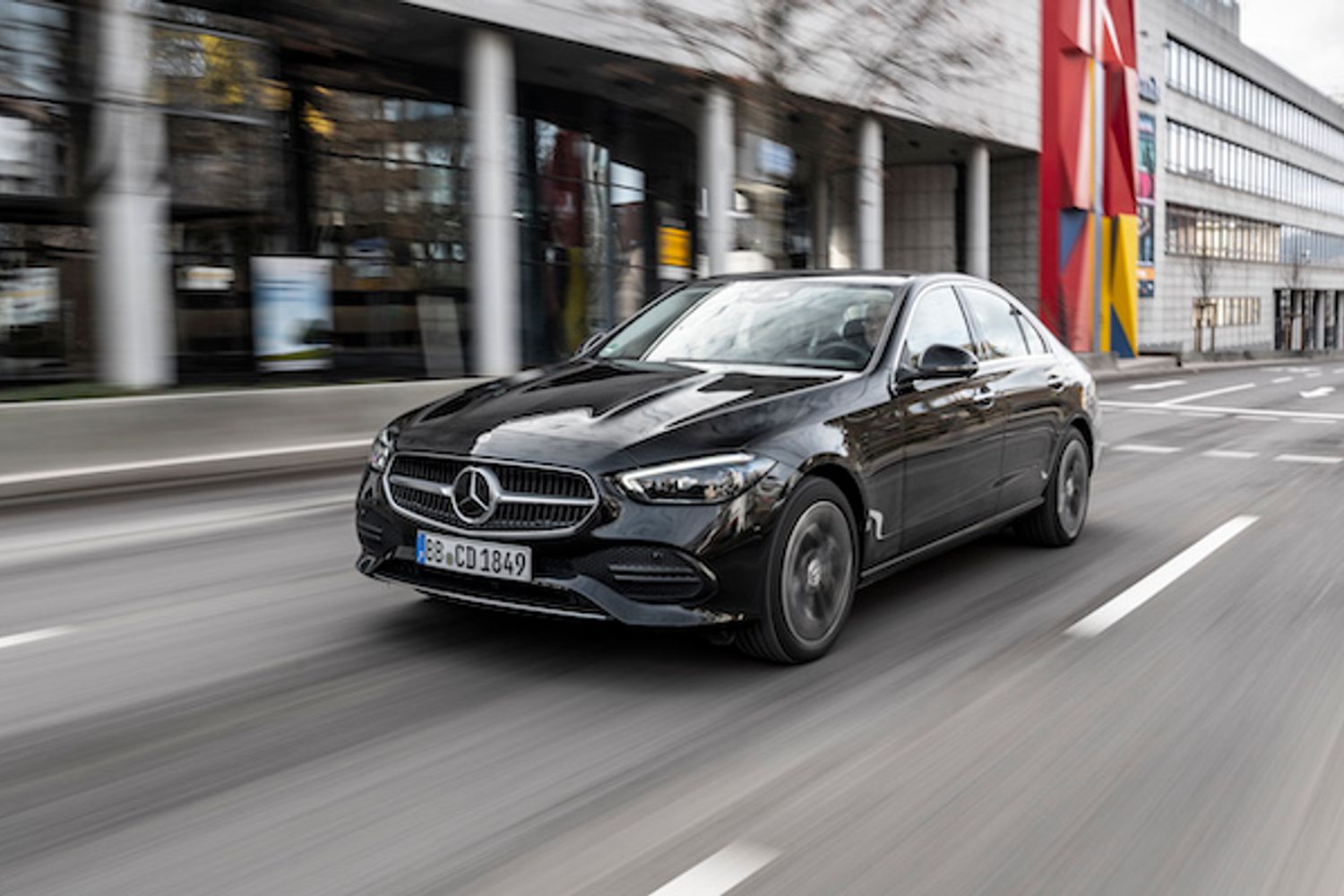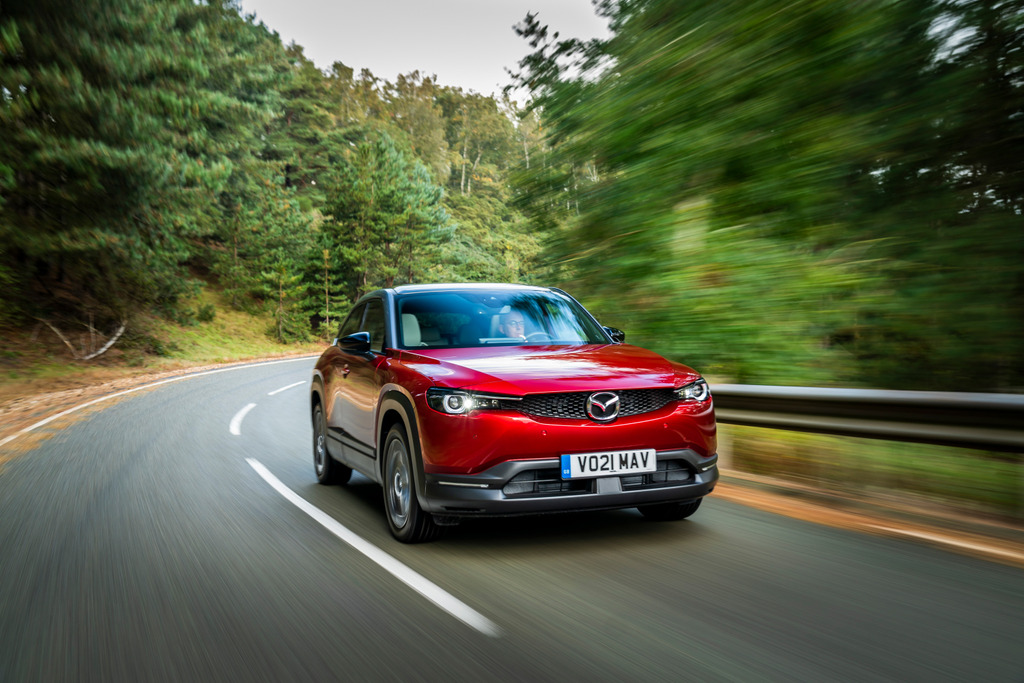While the plug-in hybrid was a rather half-hearted retrofit in the last generation of C-Class, this time it dominated the entire design of the architecture. This allowed a larger battery to be used and for it to be crammed in without hugely compromising the interior space. In the last model the salesman was never keen to let you see inside the boot or rear passenger compartment for fear you’d spot how much space had been robbed to fit in the battery cells.
They won’t have to do the same with the new car. Even though the boot floor is still a few centimetres higher than the pure petrol versions, it is now barely noticeable and the luggage compartment offers usefully more space. It is 45 litres bigger than before in the four-door saloon alone taking the total to 360 litres. In addition to the 40 additional litres the estate also has six centimetres more loading length on its data sheet. As an added bonus, all the PHEV models have self-levelling air suspension as standard.
Much of the PHEV hardware is borrowed from the new S-Class, from which the battery, the electric motor and the charging electronics are taken. However, because the C-Class is a bit smaller and therefore lighter, the package has been trimmed down a little: The battery has a usable capacity of 25.4 instead of 28.6 kWh with 96 instead of 108 cells, the motor is slightly less powerful.
And where the PHEV is a six-cylinder in the posh S-Class, a smaller four-cylinder must suffice in the C-Class. And because Mercedes is serious about electrification, there is plenty of choice: unusually both petrol and diesel versions will be offered and will be installed in the saloon as well as in the estate, with rear or all-wheel drive.
Even if all drive components have been trimmed a little, the key values remain at the level of the S-Class. This applies not only to the approximately 60 mile range and the charging time of at best 30 minutes, but also to the maximum electric speed of 70+ mph suitable for motorways. Rapid charging is possible too, at speeds of up to 55kWh.
When it comes to energy recovery, the C-Class uses all the tech from the S too. In addition to the two individual settings which are set by the driver, it uses automatic adjustment, which gently brakes when a roundabout, T-junction or a motorway exit are ahead, and a lighter feel when the road ahead is clear.
The result is a driving experience that hardly differs from a pure electric car up to motorway speeds, because the motor always has enough power to keep up with traffic – even though it is approximately 240kg heavier than the petrol-only versions. And when the engine switches on during overtaking or when the battery is finally exhausted, it does so gently and quietly. In fact, you’ll need to look at the rev counter to check it’s running.
So this is all good news, especially for company car drivers. In the UK, they are taxed according to the CO2 emissions but there is another financial incentive based on the electric-only miles the car can drive. The BMW 330e for example, which will be the C300e’s main rival, is taxed at 11% as it can cover 37 miles on electric only.
The Mercedes trumps this, being taxed at 7%. However if Mercedes could somehow find some more efficiencies to stretch the official range to 70 miles it would be 4% for 2021/22. And that could be really interesting, maybe tempting some drivers to ignore a pure electric (taxed at 1%) and pay the extra for the security of a PHEV.









